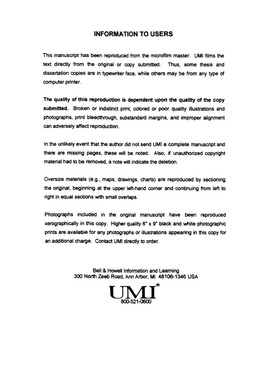| dc.contributor.advisor | Sabatini, David, | en_US |
| dc.contributor.author | Karapanagioti, Hrissi Kassiani. | en_US |
| dc.date.accessioned | 2013-08-16T12:30:47Z | |
| dc.date.available | 2013-08-16T12:30:47Z | |
| dc.date.issued | 1999 | en_US |
| dc.identifier.uri | https://hdl.handle.net/11244/5897 | |
| dc.description.abstract | Natural attenuation is currently one of the most important topics in groundwater management. Sorption and biodegradation are key processes impacting the efficiency of natural attenuation. Although extensive literature has been published on these topics additional research is required. Both processes are represented in ground water models using simplified relationships, which may result in predictions that are orders of magnitude different from actual results. | en_US |
| dc.description.abstract | Chapter 3 addresses organic matter heterogeneity with depth by examining four samples taken from different depths of the same aquifer. A significant contribution of this chapter is the use of organic petrology as a quantitative tool for predicting equilibrium sorption properties as a function of organic matter characteristics. Organic carbon content values varied by one order of magnitude and sorption capacities varied by two orders of magnitude within a given depth and location for these samples. | en_US |
| dc.description.abstract | Finally, the intraparticle sorption model from Chapters 1--3 is expanded to include biodegradation in Chapter 4. Once validated, the model is used to perform sensitivity analyses, which show that sorption nonlinearity is important when studying coupled sorption and biodegradation processes. The sensitivity analyses also define scenarios where the sorption/desorption kinetics strongly impact biodegradation kinetics. | en_US |
| dc.description.abstract | In summary, heterogeneous organic matter has been observed in an alluvial sediment. Each chapter presents different aspects of the impact this heterogeneity has on sorption properties, with the final chapter illustrating the potential impact on biodegradation. This knowledge advances our understanding of natural attenuation, and can help guide us in enhancing this attenuation when so desired. | en_US |
| dc.description.abstract | Chapters 1 and 2 present equilibrium and kinetic sorption results for Canadian River Alluvium (CRA) aquifer material with phenanthrene. CRA was divided into more homogeneous samples and their properties were tested. Chapter 1 demonstrates the improvement of the kinetic model fit for each subgroup by introducing a fast sorption term in a two-component model. Chapter 2 presents data and pictures of the most important organic matter types affecting sorption, including characterization by organic petrology methods. Heterogeneous organic matter was observed to significantly impact equilibrium and kinetic sorption, causing sorption properties to vary by one to two orders of magnitude for different organic matter types. | en_US |
| dc.format.extent | xiv, 158 leaves : | en_US |
| dc.subject | Environmental Sciences. | en_US |
| dc.subject | Phenanthrene. | en_US |
| dc.subject | Hydrology. | en_US |
| dc.subject | Hazardous wastes Natural attenuation. | en_US |
| dc.subject | Agriculture, Soil Science. | en_US |
| dc.subject | Groundwater. | en_US |
| dc.subject | Geochemistry. | en_US |
| dc.title | Impacts of heterogeneous sedimentary organic matter on phenanthrene sorption and fate processes. | en_US |
| dc.type | Thesis | en_US |
| dc.thesis.degree | Ph.D. | en_US |
| dc.thesis.degreeDiscipline | School of Civil Engineering and Environmental Science | en_US |
| dc.note | Major Professor: David Sabatini. | en_US |
| dc.note | Source: Dissertation Abstracts International, Volume: 60-11, Section: B, page: 5412. | en_US |
| ou.identifier | (UMI)AAI9952414 | en_US |
| ou.group | College of Engineering::School of Civil Engineering and Environmental Science | |
